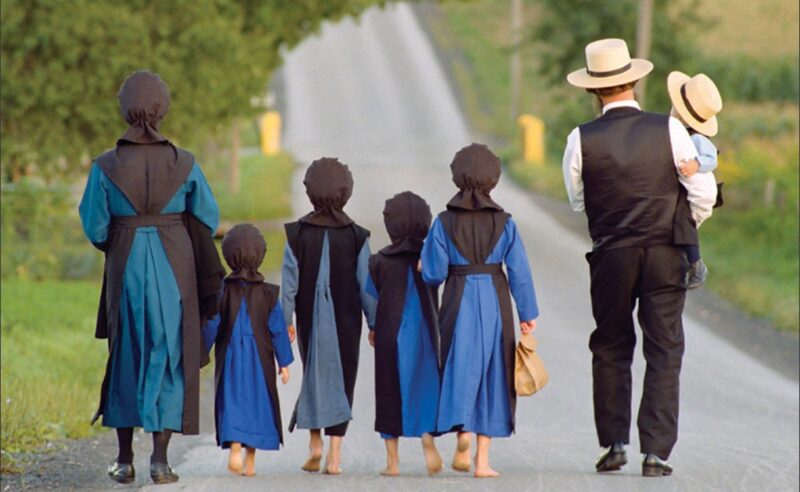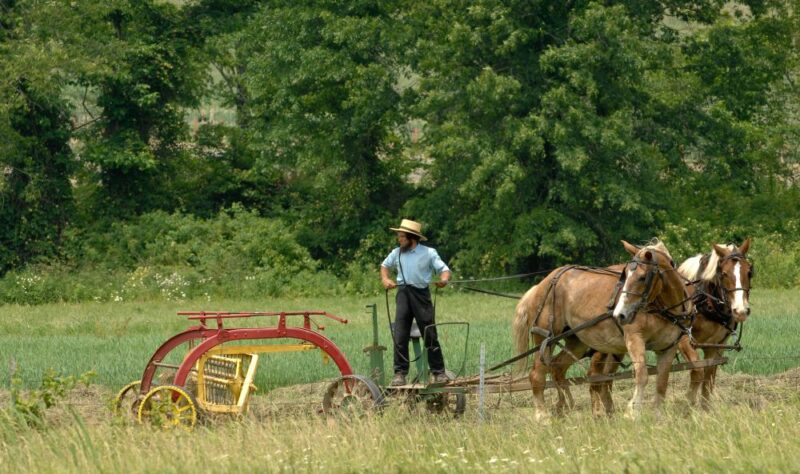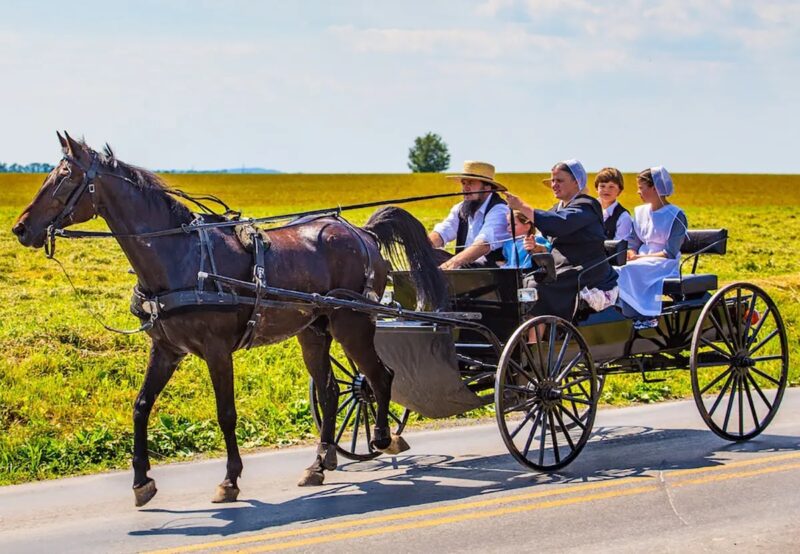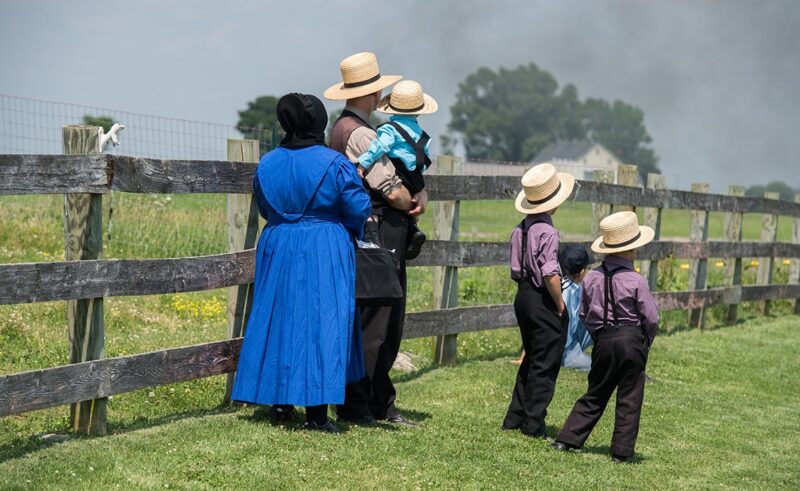The Amish have managed something almost no other modern community has: they live in the twenty-first century without being consumed by it.
Their balance of faith, tradition, and limited modernization works because their identity is built on deliberate separation, not total isolation.
The Amish do not reject technology or change outright; they decide carefully what serves their spiritual life and what threatens it.
That selective acceptance, rooted in communal decision-making, keeps their faith central and their traditions alive even as the world around them races forward.
Faith as the Foundation

Faith governs everything in Amish life. Their core principle, Gelassenheit, a German term roughly meaning “submission” or “yieldedness”, encourages humility, simplicity, and obedience to God and community. It is the spiritual filter through which every decision passes.
For instance, when new technologies appear, Amish bishops and community leaders ask whether they will strengthen or weaken Gelassenheit. If a tool promotes independence, pride, or worldliness, it is typically rejected.
That is why you will not find personal cars, televisions, or smartphones in Amish homes: these technologies foster individuality and distraction.
Church services are held in homes rather than in grand buildings, reflecting their belief that faith should be personal and community-centered.
Families gather every other Sunday for worship that lasts for several hours, conducted entirely in Pennsylvania Dutch and without instruments. Singing is slow, intentional, and communal, a symbol of unity and restraint. In a society that prizes self-expression, the Amish faith keeps the focus on collective humility.
Tradition as a Living Framework

Amish tradition is not a relic of the past; it is a living system that evolves carefully to preserve spiritual goals. Their Ordnung, the unwritten set of community rules, acts as both constitution and compass.
Each district (local congregation) interprets it slightly differently, allowing some diversity among communities. For example, one group might permit battery-powered lights on buggies for safety, while another insists on lanterns. This flexibility helps the Amish stay consistent in purpose even when outward practices differ.
Work, clothing, and language all reflect that same balance between continuity and adaptation. Amish clothing remains plain, hand-sewn, and functional. It prevents vanity and reminds wearers of equality before God.
The use of Pennsylvania Dutch and High German in everyday and religious life reinforces separation from the outside world but also preserves a cultural thread that stretches back to eighteenth-century Europe. Language here is not nostalgia; it is identity maintenance.
Modern Influence and Selective Acceptance

Contrary to stereotypes, the Amish are not frozen in time. They adopt technologies when these can serve community or economic needs without compromising values. Many allow limited use of diesel generators, solar panels, or battery systems for farm or business use.
Some families operate successful furniture workshops, greenhouses, and food production facilities that sell to non-Amish customers. These businesses often blend craftsmanship with a cautious embrace of modern tools.
Take, for instance, furniture-making communities in Pennsylvania and Ohio. Skilled Amish artisans rely on timeless woodworking methods but may use pneumatic tools or generators for efficiency.
Their work is valued not because it resists modernity but because it embodies intention; each piece is built with purpose and restraint. Stores like Snyder’s Furniture highlight this intersection, offering Amish-crafted pieces that demonstrate how faith and practicality coexist. The point is not to market tradition but to show that quality and conscience can survive even in a commercial context.
The Amish approach to business follows clear boundaries. They may interact with customers through intermediaries or use telephones kept in community phone shacks rather than homes. Internet access is generally avoided to prevent exposure to influences that conflict with their faith. Still, Amish commerce thrives precisely because of the trust, reliability, and honesty their lifestyle projects, values that many modern businesses struggle to sustain.
Education and Youth Retention

Amish education also reflects the community’s approach to balance. Children attend one-room schoolhouses until the eighth grade, learning reading, writing, arithmetic, and practical subjects like farming and sewing.
Beyond that, education happens through apprenticeship and daily labor, which prepare young people for Amish adult life. The U.S. Supreme Court’s 1972 Wisconsin v. Yoder decision recognized this system as legitimate, affirming the Amish right to educate their children according to their faith.
A key to survival is that around 85–90 percent of Amish youth choose baptism and remain in the community after Rumspringa, the brief period when teenagers experience limited exposure to the outside world.
That retention rate is extraordinary for a group that discourages higher education, mass media, and individual ambition.
It suggests that the Amish model offers young people something many modern societies fail to provide: belonging, purpose, and stability.
Economic Adaptation Without Cultural Erosion
While agriculture remains central, the Amish economy has diversified. Rising land prices and limited acreage have pushed many families toward small enterprises, furniture shops, construction crews, quilt makers, and food producers.
These businesses help them maintain independence from external labor systems. The Amish view work not as a path to wealth but as an expression of stewardship and service.
Technology plays a limited but growing role in these operations. Battery tools, non-networked computers for bookkeeping, or hired drivers for deliveries are common in more progressive districts. However, decisions are always community-based, not individual.
This collective approach ensures that change occurs only when it strengthens, not weakens, faith and family cohesion.
Challenges from the Modern World

Even with their structured resistance to outside influence, the Amish face growing pressures. Global connectivity makes their boundaries harder to maintain. Tourism, curiosity, and media portrayals can distort public understanding.
Moreover, issues like health care, environmental regulation, and zoning laws sometimes conflict with Amish practices. For example, septic system requirements or helmet laws for buggy travel can become points of negotiation between Amish communities and state governments.
Yet, rather than isolating further, many Amish leaders engage constructively with authorities and non-Amish neighbors. They negotiate practical compromises, such as reflective triangles on buggies for road safety or alternative schooling standards.
This diplomacy underscores how the Amish preserve their values through engagement, not rejection. They demonstrate that cultural survival depends not on withdrawal but on clarity of purpose.
Faith-Centered Technology Ethics
What sets the Amish apart is not their rejection of modernity but their method of discernment. Each technological innovation is tested by a single question: Will this serve the community or the self? If the answer leans toward self-promotion or convenience over connection, it is refused. If it enhances cooperation, it may be cautiously accepted. This approach could teach modern societies something about sustainable adaptation.
For example, some Amish farmers use solar panels because they promote energy independence without connecting to the public grid. Others use mechanical milkers to maintain productivity but refuse electric refrigeration if it requires full grid access.
Their guiding principle remains constant: autonomy from systems that breed dependency or pride. In this sense, the Amish way represents not a rejection of progress but a moral audit of it.
The Core of Endurance: Community Over Self

At its heart, Amish endurance comes from collective responsibility. Every choice, what to wear, how to farm, when to buy machinery, is evaluated through its impact on the group. Individual freedom is secondary to communal harmony.
That worldview runs against modern Western ideals of autonomy, yet it gives the Amish remarkable social resilience. Divorce, unemployment, and loneliness, widespread problems elsewhere, are virtually nonexistent in Amish life.
Their approach offers a rare counterpoint to modern fragmentation. While technology connects people virtually, it often isolates them physically and emotionally. The Amish show that real community depends on shared values, daily cooperation, and mutual sacrifice. It is not that they resist change; it is that they resist meaningless change.
Conclusion
The Amish balance faith, tradition, and modern influence through intentional design, not accident. Their success lies in defining boundaries, maintaining communal decision-making, and filtering every external influence through moral clarity.
They are proof that identity does not have to fade in the face of modernization; it can be strengthened by conscious limits.
Their way of life is neither primitive nor outdated; it is disciplined. In a world where constant innovation often means constant distraction, the Amish remind us that progress without purpose is just motion. By choosing what to embrace and what to refuse, they remain one of the few communities that can live in modern times without losing their timeless soul.

